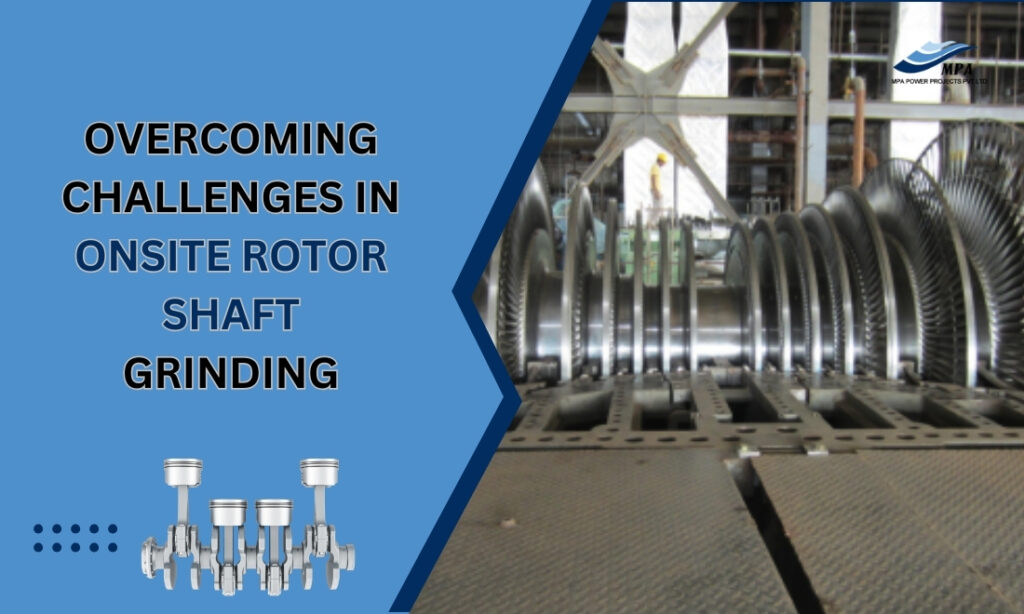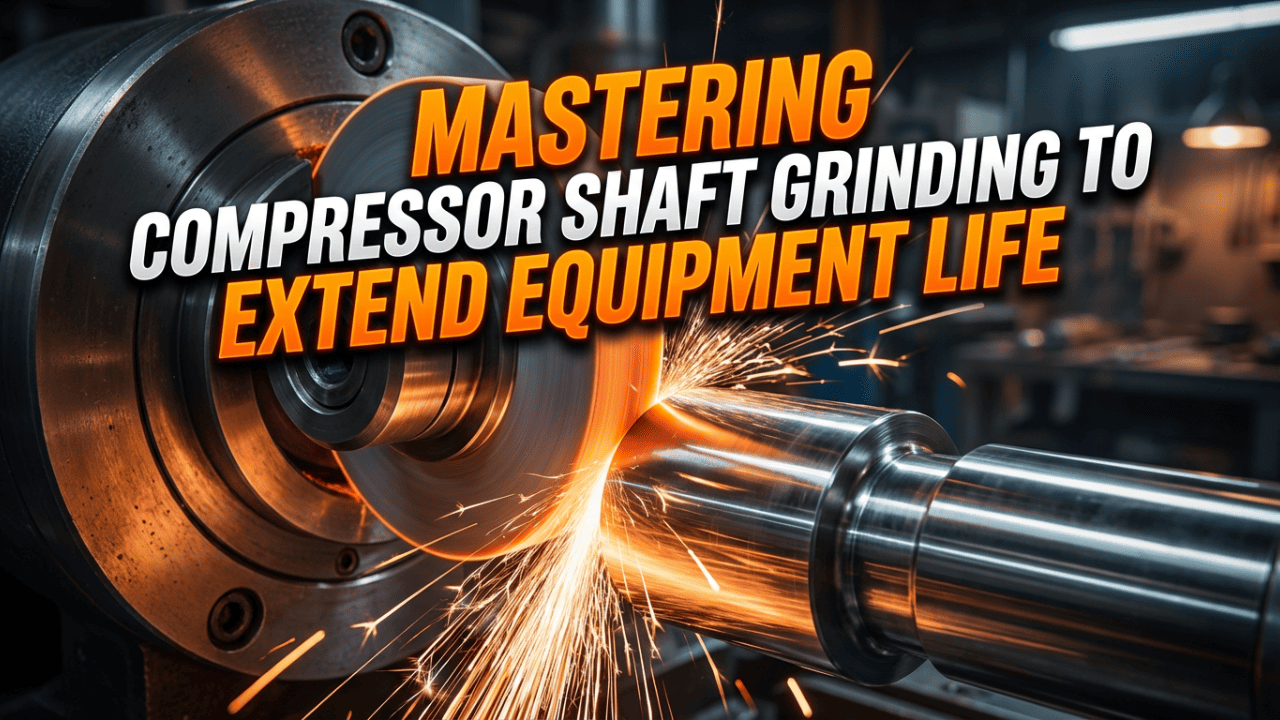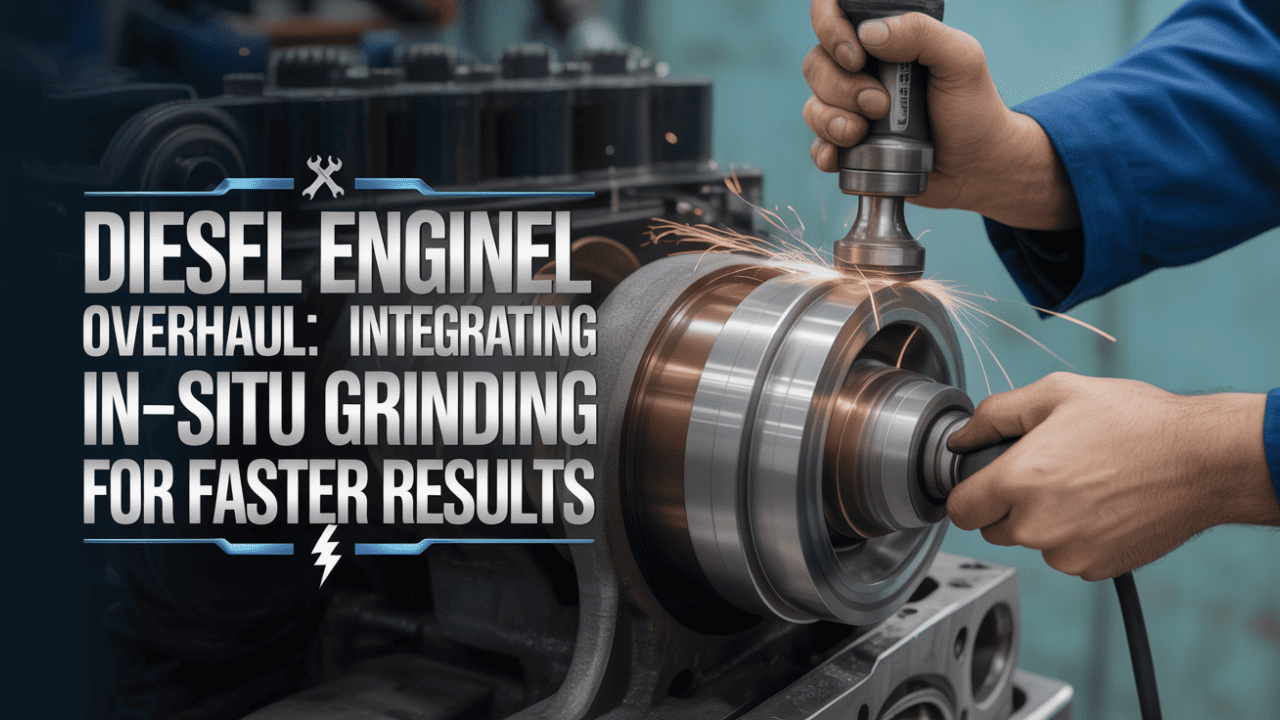Rotor shafts are the quite hidden stars for large types of spinning machinery options. These are the very parts that properly keep all their alignments and transfer all the power and force. They keep all of these power plants and oil rigs that are running without any hitch. This machinery must be made in a way that should be reliable as well as useful. It is bad to work more than what is necessary. Wear, deformation, and of course, damage can result from constant rust, erosion, and tension in the shaft. All the repairs and maintenance should be done within a short time.
There are traditional techniques. But they require the disassembly of the machine. It also includes turning the shaft in a workshop. This specific strategy has great downtime for repairing it. This results in less productivity and far higher prices. Other alternatives are there. This includes the on-site rotor shaft grinding process. Directly connecting cutting tools to the machine reduces downtime and expenses to a great extent. This has the ability to change. But it has some drawbacks, no doubt. Despite all these challenges, local Rotor Shaft Grinding Onsite has all its advantages. Understanding the problems and providing tactics can resolve them. Professionals could use compact, precision handheld grinding tools for tight places.
Common Challenges in Onsite Rotor Shaft Grinding
The Rotor Shaft Grinding Onsite offers benefits, but repairing its problems requires understanding the ways to circumvent them. Among the most important is the small work area next to the machinery. The cutting tools are cumbersome to install, use, and move because of the limited space.
Grinding should be carried out with properly aligned wheels, but site conditions may cause difficulty in this regard. It is also more difficult to check and correct the balance of the grinder without a shop.
Industrial grinding operations are sensitive to dust, humidity, and temperature, all of which impact worker safety, tool performance, and cutting precision. Temperature and humidity may dull visibility and make finishing difficult. Dust will also prevent easy viewing.
Safety is paramount when cutting on-site. It includes specialised equipment and rotating tools that cause grinding dust, electrical hazards, and falling debris. These risks can be minimised by using safety standards and appropriate PPE.
Workspace and accessibility considerations
The COMPRESSOR SHAFT GRINDING needs meticulous planning, especially when the equipment is to be moved in the small spaces available. The work begins with a thorough evaluation. The staff takes precise measurements of gaps and identifies objects that may be an obstruction. This information serves to plan where to place the objects to ensure that the repair staff can move easily.
Specialised tools and equipment can solve space problems. Small, flexible-bladed portable grinding tools work well in cramped spaces. Tools that have significantly bigger handles or can be controlled remotely are easier to work with and move around in tight areas.
Good installation and setup procedures eliminate wasted downtime. Plan ahead before removing and reinstalling machine elements around the shaft. This can be accomplished rapidly through the use of quick-release fasteners.
Achieving Precise Alignment and Setup
Grinding spots rely on shaft alignment. A properly aligned shaft keeps the work concentric during grinding, providing a smooth and balanced finish. Any imbalance can lead to problems. Vibration can be produced with material being removed unevenly, and a shaft may fail too early.
Laser shaft alignment systems and numerical markers assist in the installation of the shaft at a jobsite. The devices provide a real-time orientation datum for the shaft to be adjusted until concentricity is achieved. Self-aligning grinding tools further diminish alignment errors. The heads follow any movement, no matter how minute, to provide a good finish.
Every detail needs to be taken into account when erecting cutting tools on the ground. The correct way to install your grinder is exactly as indicated in the user manual. A strong, well-levelled baseplate is required to support the grinding machine and correctly align its shafts. A simple fault in the baseplate could place the grinding wheel out of alignment.
Mitigating environmental factors
Site grinding requires a clean, safe workspace for both staff and equipment. Grinding can produce a considerable amount of dust. Air quality, grinding machine operation, and workspace visibility can be severely compromised. Local air handling is required to address these concerns. Dust extractors prevent the spread of dust by collecting it where it is produced. Dust shrouds around the grinding area enhance dust collection by limiting dust migration.
High humidity and high heat complicate on-site grinding. Grinding or equipment performance may be impacted by external factors. Grinding in temporary, temperature-controlled structures can be carried out under extreme conditions. Such covers protect grinding and equipment performance by controlling humidity and temperature.
Safety plays a very important role in spot grinding. The grounding of cutting equipment protects against electrical hazards. Waterproof barriers protect against wind and rain. Finally, grinding requires PPE to prevent the inhalation of dust and the movement of objects. These processes help protect and clean spot-grinding areas.
Safety Protocols and Precautions
Safety for people and equipment is very important when grinding on-site. This assurance depends on lockout/tagout (LOTO) procedures. Disconnect the device being repaired from power before cutting. Locking and tagging control points do this. These prevent accidental grinding machine start-up. Machine guards around grinding wheels avoid injuries too. These guards protect workers near the high-speed grinding wheel from moving objects or accidents.
Prevention of problems and preparedness are keys. From tool failures to fires and staff casualties, all possible emergencies need an overall plan. There should be evacuation routes, first aid personnel, and communication mechanisms. Everyone knows what to do with a clear and coordinated emergency response strategy, limiting damage and expediting recovery.
Workers are protected, and repairs are successful with LOTO procedures, machine protection, and a specific emergency response plan for on-site grinding.
Logistical and coordination challenges
Planning for on-site grinding must be in place. Work scheduled during the facility’s planned maintenance outages should be used to minimise the facility’s downtime. Pre-job preparation will need to include permissions and facility personnel safety and access training. This message should go over grinding processes, risks, and safety.
The process relies on communication and cooperation with the facility workers. This can be seen with the containment of the workplace and the protection of facility workers and grinding teams. The team members can share the responsibility of downtime and post-grind clean-up. A clean maintenance outage with the rest of the contractors must be coordinated through communication to reduce the timeline hassles. Equipment delivery and setup require proper planning. Getting grinding equipment to the job site safely and efficiently is important. Safety relies on proper lifting equipment and machine security during transportation. A proper work site with grounding and power is required prior to the installation of grinding equipment. We guarantee the safety and efficiency of grinding. Grinding operations completed successfully on-site can help reduce plant downtime with proper planning and scheduling.
Best Practices and Tips from Industry Experts
On-Site Rotor Shaft Grinding Experts Offer Tips for Productivity Quality small tools are crucial. Reliable, versatile equipment with remote controls or dust extraction might enhance on-site safety and productivity. A remote handle allows easier access to tight spaces, with dust extraction reducing health risks during grinding.
Focus on certification and training in tech. It trains them on how to handle live grinding situations. In this training, they should know how to spot dangers, wear PPE, and address emergencies in the field while grinding safely. They should be knowledgeable about shaft grinding and the installation process so they can deliver clean finishes.
Creating a library of common repair procedures can assist on-site grinding. Technicians can refer to best practices to have written guidance on shaft concerns, such as wear or misalignment. This will save time and ensure quality projects.
Experience is a key element in learning. Sharing knowledge and looking back at previous trials makes things better. Industry bodies and workshops provide a platform for technicians to discuss and improve on-site grinding projects. Case studies can teach students based on other people’s successes and failures, enhancing their skills in the field.
Conclusion
Efficiency matters a lot in business today. This involves grinding the rotating shaft. Repairs in the traditional sense might do the job, but they are time-consuming and expensive as they shut output down. A major role is played by on-site compressor shaft grinding in the repair and maintenance service of the MPA Power Engine to reduce losses and costs due to downtime. In-situ grinding is much more challenging compared to in-studio grinding. A small work area, issues of balancing, or external factors could make the repair problematic. MPA Power Engine has the best equipment, skilled manpower, and proper planning to work these out.











No Comments